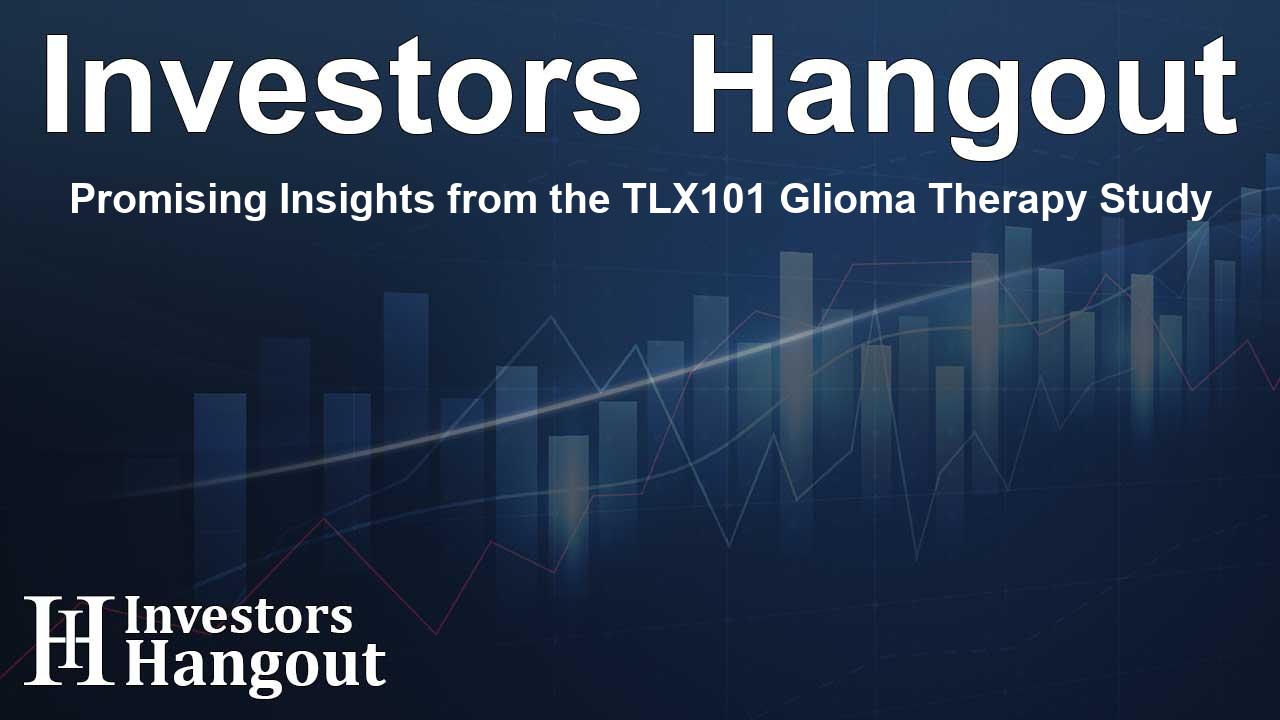Promising Insights from the TLX101 Glioma Therapy Study

Promising Insights from the TLX101 Glioma Therapy Study
Telix Pharmaceuticals Limited (ASX: TLX, NASDAQ: TLX) has unveiled encouraging preliminary findings from the Phase 2 IPAX-Linz study of TLX101, a therapy candidate aimed at treating recurrent high-grade gliomas, a type of brain cancer. This study builds upon the significant patient benefits previously seen in the initial IPAX-1 investigation.
Overview of the IPAX-Linz Study
The IPAX-Linz study is an investigator-initiated clinical trial that focuses on assessing the safety, tolerability, and preliminary efficacy of TLX101 when combined with external beam radiation therapy (EBRT). The study specifically targets patients experiencing their first or second recurrence of high-grade gliomas, including glioblastoma.
Efficacy and Tolerability
Treatment using TLX101 has shown to be well tolerated, with no serious adverse events reported among the participants. The study presented promising preliminary efficacy data, revealing a median overall survival of 12.4 months from the start of TLX101 treatment, and 32.2 months from the original diagnosis. This outcome aligns closely with findings from the earlier IPAX-1 study, which recorded a median overall survival of 13 months post-treatment initiation, indicating the potential effectiveness of TLX101 therapy.
Patient Inclusion and Study Design
Eight patients were enrolled in this study. Each participant underwent adaptive dosing of intravenous TLX101, receiving doses before and after second-line EBRT. Criteria for inclusion involved demonstrated evidence of glioblastoma recurrence post-standard radiochemotherapy and at least six months after initial EBRT completion. Importantly, five of the eight patients had tumors with unmethylated MGMT, a marker associated with poor prognosis.
Expert Commentary on the Findings
Professor Josef Pichler, the principal investigator for the IPAX studies, expressed optimism regarding the findings. He emphasized the well-tolerated nature of the treatment and the encouraging preliminary efficacy, despite the challenging prognosis for patients with multiple recurrences or unmethylated tumors. These results reflect significant promise for improving outcomes in patients facing high-grade gliomas.
Next Steps in TLX101 Development
Following these positive results, Telix continues to advance its investigation into TLX101 across both front-line and recurrent treatment scenarios. The ongoing IPAX-2 Phase 1/2 study, which combines TLX101 with established standard care for glioblastoma, further aims to expand its findings. Additionally, a registration-enabling study for TLX101 in recurrent glioblastoma has been submitted for ethics approval, with patient enrollment expected to commence in Australia soon.
Future Plans and Regulatory Steps
With a successful pre-IND meeting with the U.S. Food and Drug Administration (FDA) anticipated in the near future, Telix aims to submit an IND application that will allow for expanding clinical trials to U.S. locations.
Understanding TLX101
TLX101 is a targeted radiation therapy that specifically aims at L-type amino acid transporter 1 (LAT1), commonly over-expressed in glioblastoma. Its design involves a small molecule approach crucial for traversing the blood-brain barrier. TLX101 has received orphan drug designation in the U.S. and Europe for glioma treatment.
About Telix Pharmaceuticals Limited
Telix Pharmaceuticals is dedicated to the development and commercialization of radiopharmaceuticals for therapeutic and diagnostic purposes. With headquarters in Melbourne, Australia, the company operates internationally and is focused on providing innovative solutions for oncology and rare diseases. Alongside its promising TLX101 therapy, Telix is working on an array of products to meet pressing medical needs.
Frequently Asked Questions
What is TLX101 and what is its purpose?
TLX101 is a targeted radiation therapy designed to treat gliomas, a type of brain cancer, by targeting the L-type amino acid transporter 1 (LAT1).
What were the key findings from the IPAX-Linz study?
The key findings include a median overall survival of 12.4 months from TLX101 treatment initiation, indicating promising efficacy and safety.
How many patients participated in the IPAX-Linz study?
A total of eight patients participated in the IPAX-Linz study, all of whom had experienced glioblastoma recurrences.
What are the future plans for TLX101?
Telix plans to continue advancing studies for TLX101 and aims to submit an IND application to expand clinical trials in the U.S.
How does TLX101 differ from traditional therapies for glioma?
Unlike traditional therapies, TLX101 is a targeted treatment that directly addresses specific cancer pathways, potentially leading to better outcomes for patients.
About The Author
Contact Dominic Sanders privately here. Or send an email with ATTN: Dominic Sanders as the subject to contact@investorshangout.com.
About Investors Hangout
Investors Hangout is a leading online stock forum for financial discussion and learning, offering a wide range of free tools and resources. It draws in traders of all levels, who exchange market knowledge, investigate trading tactics, and keep an eye on industry developments in real time. Featuring financial articles, stock message boards, quotes, charts, company profiles, and live news updates. Through cooperative learning and a wealth of informational resources, it helps users from novices creating their first portfolios to experts honing their techniques. Join Investors Hangout today: https://investorshangout.com/
The content of this article is based on factual, publicly available information and does not represent legal, financial, or investment advice. Investors Hangout does not offer financial advice, and the author is not a licensed financial advisor. Consult a qualified advisor before making any financial or investment decisions based on this article. This article should not be considered advice to purchase, sell, or hold any securities or other investments. If any of the material provided here is inaccurate, please contact us for corrections.
